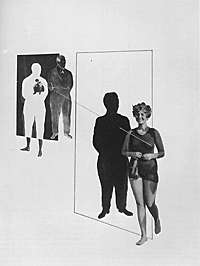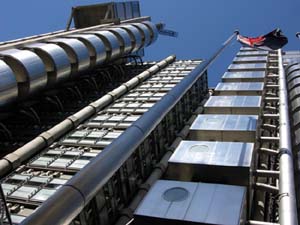Owen said:
if anything, the dictatorships of the 30s were the first postmodernists- the first to harness innovation to obscurantism.
luka said:
it's not like theres no modernist/fascist overlap. or modernist apologists for stalin. this thread is confusing.
Sure, it is easy to conflate avant-garde modernism with 20th century modernity's contemporaneous reactions to it, but it is clear why the modernist avant-garde [as opposed to the earlier bourgeoise modernist project of autonomising art, from politics, from society] failed to deliver on its promises to abolish oppressive ideologies and institutions or to merge art and life in a progressive social transformation. The militant rhetoric and manifestos of the avant-garde rang loudly for little more than a decade before being silenced by fascism, bureaucratic socialism, capitalism, and war. In Germany, the avant-garde tradition was stopped in its tracks in 1933 when Hitler came to power and banished all forms of modern art as decadent. In Soviet Russia, the last vestiges of a flourishing avant-garde tradition were exterminated by 1934 with the declaration of socialist realism as the official style under the cultural czardom of Zhdanov. In the United States, the avant-garde was defanged during the 1940s and 1950s, less harshly but no less decisively, with the canonization of modernism in the universities and museums and the commodification of art in a dramatically expanding art market. Modernist art lost its sharp critical and oppositional edge, becoming an adornment to the consumer society, while its techniques were absorbed into advertising, packaging, and design, as well as the aestheticization of everyday life, in short into post-modernism ...
But returning to some other examples of avant-garde modernist architecture: in the prissy, reactionary Ireland of the post-independent 20th century there was the singular
Michael Scott [1905-1989], Ireland's only avant-garde 20th century architect [described by critics as "an unreconstructed militant modernist"], modernism having been ruthlessly censored by a reactionary, bourgeoise Catholic theocracy [hence the exiled-modernist flight to continental Europe of Joyce and Beckett]
The only example of rigorous architectural "small structure" modernism in the whole of Ireland, Scott's 1950's house [where he lived for many years, converting the adjacent Napoleonic Tower into the Joyce Museum, it having featured prominently in Chapter One of Joyce's
Ulysses]:
Admitedly, not up to the small-structure formal brilliance of Mies van der Rohe's Barcelona Pavilion
[Incidentally, Scott's house is just a stone's throw away
from Beckett's NOT I adolescent abode] :
Scott's best-known achievement, Dublin's main
Bus Station, Busarus, which was - and still is - predictably hated by most of the classicist/pomo population:
















